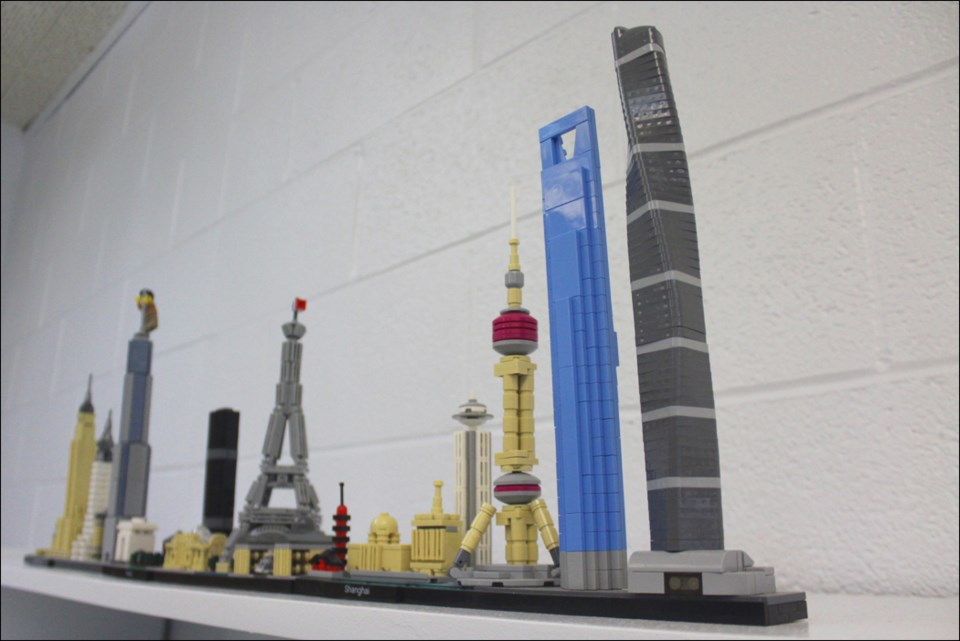A group of students at École McIsaac School are building something special, brick by brick - literally.
The McIsaac Lego club will enter its second year during this upcoming school year, set to start Sept. 4. Formed from students Grade 6 and lower, the club is aimed to inspire creativity in students.
Teacher Rogerio Areias started the group last year, which provides an outlet for both English and French Immersion students at lunch periods two times a week. The idea for the club came from a school in Selkirk where Areias worked at before moving north.
“I did it because not all kids like sports or drama or singing, stuff like that. It’s hands-on, they’re talking to each other, they’re building stuff,” he said.
When Areias and three other teachers - Lucie Frederick, Crystal Hernandez and Melanie LaRouche - got the club rolling last year, kids took to the club immediately.
“I was surprised at the interest level for some of the older students. I didn’t know it would be such a hit. From Grades 4-6, we had about 20 to 30 students. I would say a third of them don’t even come for the Lego - they come for that social piece, just to hang out with friends,” Areias said.
Students are able to build either from a manual or make their own freeform works from random free pieces. While it may seem like play time, the program can inspire future engineers or architects and improve students’ problem solving, social skills and fine motor skills.
“I would say social skills are probably the biggest for the younger ones, fine motor skills and things like that. For the older ones, they honestly just like to come and hang out. Sometimes, they're just outside doing nothing - they'd rather be in here. They're building something. Sometimes, they're just hanging out because they want to be part of that group,” Areias said.
Not only does the club provide young builders with a chance to have their visions come alive, students with autism spectrum disorder have been able to use the program to improve social skills in a welcoming environment. Scholastic articles and studies have shown tactile and sensory play can have benefits for children on the autism spectrum.
“We do have kids with autism come and they’re fully integrated with everyone else - no support needed. They’re doing great,” said Areias.
“I thought every school really should have [a Lego club].”
So far, the biggest pieces made by the group have been skylines and buildings, including a tableau of famous locations in New York and China.
“Those ones are geared for Grades 4-6, because they’re complicated. Some of them are over 1,000 pieces and they’re really small. We have to keep them in separate bags,” said Areias.
The group’s work hinges on donations and volunteer time from the teachers. Since Lego bricks don’t grow on trees or multiply, the club has had to rely on donations to help cover the club’s growing membership.
Last year, Areias said parents and community members dropped off sets of Lego for the students. The Parents Advisory Council and the local chapter of Canadian Parents for French each donated sets for the club, as well as one enterprising student who left an impression on Areias.
“We had one little girl who came a few times to the club, then on her birthday, she asked that everyone give Lego to donate to the club - that was really nice.”
This year, Areias hopes to expand the club from middle grades to junior high, growing to possibly three times a week and starting the club earlier in the school year, possibly as early as late September. To build that larger foundation, Areias and the rest of the teachers behind the club are going to need bricks - lots and lots of Lego bricks.
“As far as donations go, we never say no. There’s never enough Lego and Lego is really expensive,” he said.
“I just like seeing the look on the kids’ faces when they finish a set or they build something. Sometimes, it’s something small and they just want to share it with everyone. It’s a proud moment, they’ve accomplished something. We try to build on that.”
Donations for the club can be sent to the École McIsaac School office or to classrooms in the school’s annex, located on the northern portion of the building.




